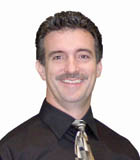
By Chad Elberson, Chaplain, Indian River Estates West, Vero Beach, FL
I remember reading that at one point in the history of communication the telegraph was the fastest means of long-distance communication. One day, a young man applied for a job as Morse code operator.
Arriving for his interview, he made his way into a spacious, noisy reception area with a telegraph clattering away in the background. After checking in with the receptionist, the young man made his way toward the end of the long line of applicants. However, right before sitting down he paused for a second and made his way past all the others and went right into the boss’ office.
Within a few minutes both the young man and the boss emerged from the inner office.
“Gentlemen, thank you very much for coming, but the job has been filled,” said the owner.
“I don’t understand,” replied one of the other applicants.
The employer gave this answer: “While you’ve been sitting here, the telegraph has been ticking out the following message: ‘If you understand this message, then come right in. The job is yours.’”
Just like the tick, tick, ticking in a telegraph office carries a message, each of the daily sounds we hear transmits that someone is nearby. Footsteps with the steady cadence of jingling keys, voices on the walkie-talkie, the squeak of a wheelchair, the hum of an electric cart, the rattling of silverware and the clanging of plates, the rustling of paper and that “beep” when you press the wrong key on the keyboard.
Each of these sounds separate the silence in our daily environment and every tick, clang and beep has an individual person attached, announcing that we have the opportunity to share a “Hello” or “Good morning” or even to sit and enjoy a visit. Relationship building … The opportunity is ours each and every day.
What matters most
Indian River Estates West (IREW), a multilevel retirement campus, is a welcoming environment with independent living apartments and common areas that are warm and inviting. The physical components of culture change are essential and we have them. Still, what is significant both during and after all the trowels and paint buckets are put away?
It’s the relationships. Relationships are key for a cohesiveness that withstands the sunshine, the wind and the rain in a community. In 2004, the Vero Beach area experienced an unusual weather pattern that brought Hurricanes Frances and Jeanne to her shores within a few weeks of each other. During those two storms, the wind and the rain pounded the landscape relentlessly. Utilities and normal daily routines were rearranged for several days.
However, somehow in the mix of mac ‘n’ cheese and egg salad sandwiches the wind and the rain took a back seat to the high morale sailing along among the staff and residents.
Why? Relationships. Bonds formed between the employees and residents. We had a common challenge (the hurricanes) and a mutual goal (pulling through and rebuilding). There were lots of meetings, planning sessions, waiting and working together. And not all of the gatherings were warm and fuzzy as we worked on details and forged those relationships.
However, each of those relationships is the identifying ingredient to our homelike culture within our non-medical life-care unit. Those relationships are building blocks of what makes a homelike environment. After all, what makes a home? Four walls and a roof? No. It’s warmth, security and relationships.
Stepping up
We like to continue those relationships by regular visitation with residents who have moved to a higher level of care. One way we have worked at continuing the connection (the relationship) has been to open up the opportunity for employees to visit residents who have transitioned to a higher level of care.
Usually after the first visit, I have found the individuals are comfortable visiting on their own or with another employee.
Having the special visitor, such as a staff member they had not seen in a while, makes the residents feel encouraged and special because a staff member chose to visit them. On one occasion, the resident said to one of our landscapers who was visiting, “I know you. You’re the one who works outside with the weed-eater.” The residents notice what goes on around them.
In speaking to the employees afterward, they all commented on how it made them feel good inside that they could bring joy to someone they knew. It was satisfying and fulfilling.
So we have discovered as an independent community that we can create a homelike environment in our own building as well as bring a positive influence throughout the campus. We all share a common goal of creating warm and caring surroundings.
And that is home. A common goal. We live together as families to enjoy common goals and challenges. And within the pursuing of those common goals we spend quality time together, getting to know one another, in the context of a unified destination … Home.
“Home” happens when relationships are being built within the context of mutual goals and every tick, clang and beep we hear is an opportunity to shape that home.
From the March 01, 2010 Issue of McKnight's Long-Term Care News



